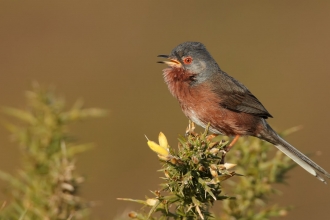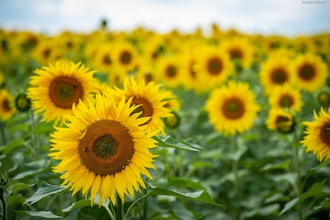Tony Bates
Living Churchyards
From bats to beetles and barn owls to butterflies, churchyards provide an oasis for wildlife to exist and thrive and the objective of the Living Churchyards project is to advise those in charge of managing the wonderful churchyards across Dorset with wildlife in mind. As land which has often never been agriculturally improved, churchyards provide welcome conditions for a host of wildlife species. Over the last 22 years, a team of Dorset Wildlife Trust volunteers have visited over 150 churches throughout Dorset, each with its own unique character and always a special place for wildlife. As part of the project, we discuss the individual needs with those in charge of churchyard management and carry out a simple survey to identify plant and insect species which already exist or which it might attract given a wildlife-friendly approach. Maintaining areas that are wildlife friendly need not mean creating a wilderness, rather adapting grass mowing regimes or hedge management, installing bird and bat boxes and identifying lichens on tombstones and walls.
Find out how St Mary's Bransgore have transformed their churchyard
A group of committed volunteers have been working together for over ten years to transform the neglected and overgrown churchyard into a haven for wildlife with the support and encouragement of the Living Churchyards Project.
Interested in making your churchyard wildlife-friendly?
If you are managing a churchyard and would like some advice, please do get in touch. We also have downloadable resources available at the bottom of the page which you may find useful.
Ten wildlife-friendly ways to manage your churchyard
The experts in our Living Churchyards team have put together this guide to ten different aspects of churchyard management which will help to encourage wildlife to thrive.
A new grass cutting regime
Grassland management is nearly always the most important aspect of churchyard management and can make a huge difference through encouraging native plants to grow which provide nectar for insects.
We recommend maintaining three different grass lengths in the summer months. Identify areas which can be left as long grass to create a wildflower meadow, areas where grass can be cut at a medium length and those areas which need a short close cut eg pathways.
- Cut the long grass (30-40 cm) in May and September (although flexibility will be needed depending on growing conditions)
- Cut the medium length grass (15-25 cm) in May, June, August and October.
- Cut the short grass (5 cm) weekly or fortnightly.
After mowing, remove all cuttings to reduce the nutrient-richness of the soil which will enable wildflowers to thrive.
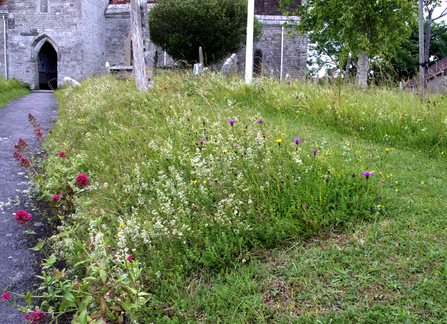
Tony Bates
Long grass retained in species-rich area
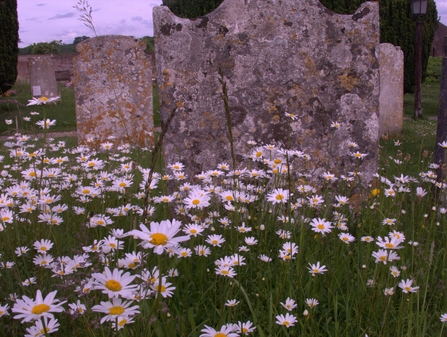
Tony Bates
Medium length grass with oxeye daisies
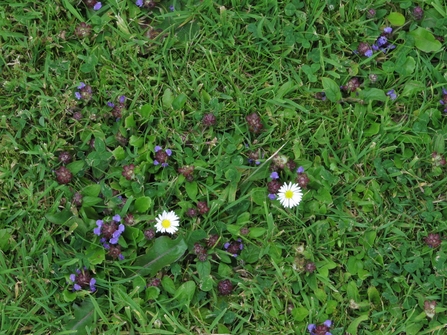
Tony Bates
Short close cut mown grass. Some plants such as selfheal thrive in short grass.
Hedges are a friend to wildlife
Hedges provide an important food source for wildlife and the perfect place for birds to nest. Ideally cut hedges between November and February and aim to leave some sections uncut each year.
Tony Bates
Tony Bates
Beech hedge
The importance of shrubs
Shrubs are also a valuable element in a churchyard providing a variety of habitats and food for wildlife. Our advice is to maintain individual native shrubs as well as those in hedges, only prune outside the bird nesting season from March to August and ideally replace non-native shrubs where possible over time.
Tony Bates
Tony Bates
Leave the lichen on gravestones
Gravestones are very important sites for a large range of different lichen and frequently mosses which offer great botanical interest. Wherever possible make sure that they are not disturbed or scrubbed as they do no harm to the stone, the exception being war graves.
Tony Bates
Walls and stonework provide an ideal habitat
Identify areas where ferns and other small plants that are only growing on walls or stonework. Ideally, we would like to see small cracks left to house invertebrates who pollinate plants, help break down and recycle organic material, and provide an important food source for lots of other animals. Alow some ivy which flowers in the autum providing an important but take care to keep this invasive plant under control.
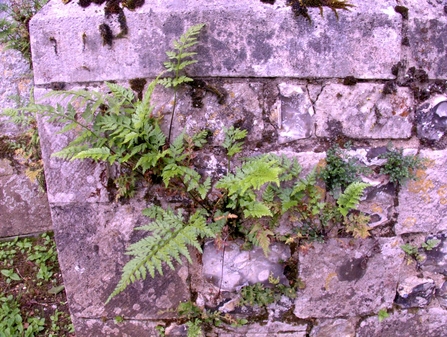
Tony Bates
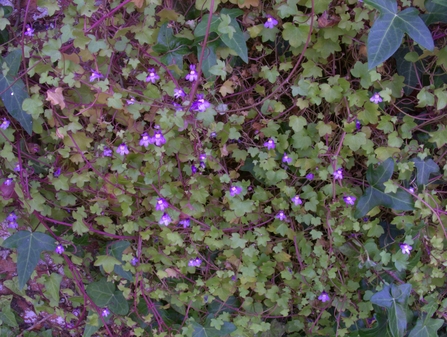
Tony Bates
Compost heaps and deadwood piles
Compost heaps and piles of deadwood provide the perfect habitats for insects and reptiles such as slowworms and toads. Plan to provide as many of these as possible in corners of the churchyard and behind buildings where they won't be disturbed.
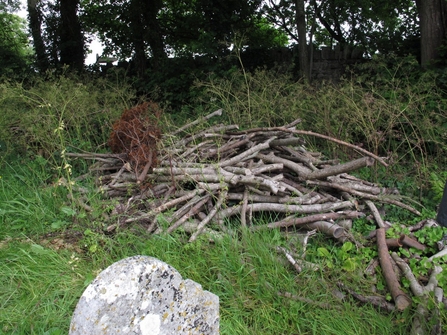
Tony Bates
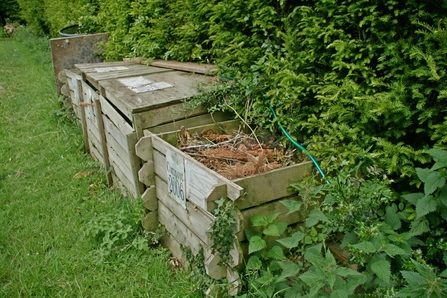
Tony Bates
Homes for bees, birds and hedgehogs
Insect hotels, bird and bat boxes will make the world of difference to the wildlife in your churchyard. Simply install them and we're sure the wildlife will find them and be grateful for their new home. If you have volunteers who will maintain a bird feeder, that will attract more wildlife and provide another food source for local birds, particularly in the winter.
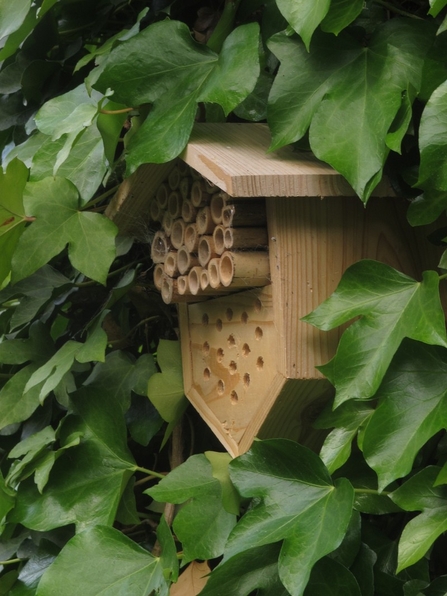
Tony Bates
Insect hotel
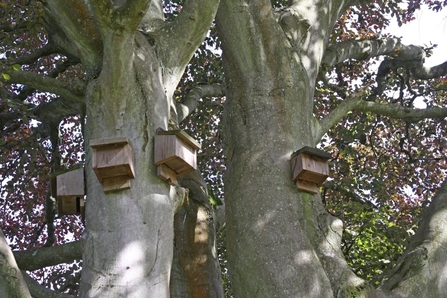
Tony Bates
Bat boxes
Everyone needs water
All wildlife need water and so providing a source of water in the churchyard is vital. It does not need to be large - a bird bath will do!
Tell everyone about what you're doing
Let everyone know what's happening in the churchyard. Mount a simple display in the porch or inside the church showing what has been done and why. Notices beside the habitats will be a great help in explaining the reasons for the project with details about the wildlife-friendly approach to management and the native species with photographs to show what the species look like when not in flower. Sometimes people think that the churchyard is being neglected if they don't see it being mown as often but once they know it's to encourage wildlife, they might even follow the example in their own gardens.
Tony Bates
Information boards about the Living Churchyards project
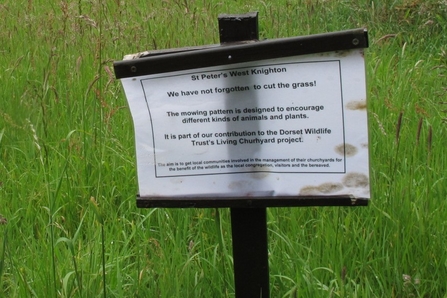
Tony Bates
It's not that we've forgotten to mow the grass...
Involve the community
Once they know what's happening, more members of the community might well like to get involved. Whoever is running the project should liaise with your Parochial Church Council and perhaps contact the local school and community groups to invite them to come and look around the churchyard or give a talk in the community space.

